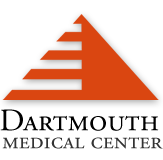 Heavy coffee drinkers may have a reduced risk of prostate cancer, study suggests.
Heavy coffee drinkers may have a reduced risk of prostate cancer, study suggests.ABC World News (5/17, story 6, 2:10, Sawyer) reported, "Fifty-eight percent of Americans drink coffee every day. But there is word tonight that even as little as one cup of coffee, even decaf coffee, could have powerful health benefits." NBC Nightly News (5/17, story 5, 2:15, Williams) noted, "It comes from the Harvard School of Public Health; and it seems to hold strong evidence that coffee can help prevent prostate cancer." The CBS Evening News (5/17, story 6, 1:05, Couric) reported, "The study involved 47,000 men and it found those who drank a lot of coffee, six or more cups a day, reduced their risk of lethal prostate cancer."
The Washington Post (5/17, Stein) "The Checkup" blog reported that researchers analyzed data from "47,911 US men who participated in the Health Professionals Follow-up Study." As part of the "large, ongoing" examination of men's health issues, participants reported their "coffee consumption every four years between 1986 and 2008." Interestingly, the men who "consumed the most coffee, which was defined as six or more cups every day, were nearly 20 percent less likely to develop any form of prostate cancer," the researchers reported in the May 17 issue of the Journal of the National Cancer Institute.
According to Bloomberg News (5/18, Ostrow), the study team found that men who consumed "six or more" cups of regular or decaffeinated coffee also had a "60 percent lower risk of developing deadly metastatic prostate cancer," and one to three cups "cut the risk of lethal prostate cancer by 30 percent." The findings suggest "non-caffeine elements in coffee" may provide the benefit. Coffee contains "compounds that can reduce inflammation and regulate insulin"; and previous research linked it to a lower risk of "Parkinson's disease, type 2 diabetes, liver cancer, cirrhosis and gallstone disease," the study authors noted.
According to HealthDay (5/17, Reinberg), lead researcher Kathryn Wilson, PhD, pointed out that coffee is a "major source of antioxidants that might have anti-cancer effects," and it may impact sex-hormone levels as well. Notably, even after accounting for "lifestyle factors, such as age, smoking, obesity and exercise, the decline in the odds for prostate cancer remained."
Meanwhile, WebMD (5/17, Doheny) noted that, according to the American Cancer Society, about "217,730 new cases of prostate cancer were diagnosed" in the US in 2010 and approximately "32,000 men" died of the disease. The CBS News (5/18, Freeman) website also covers the story.


























